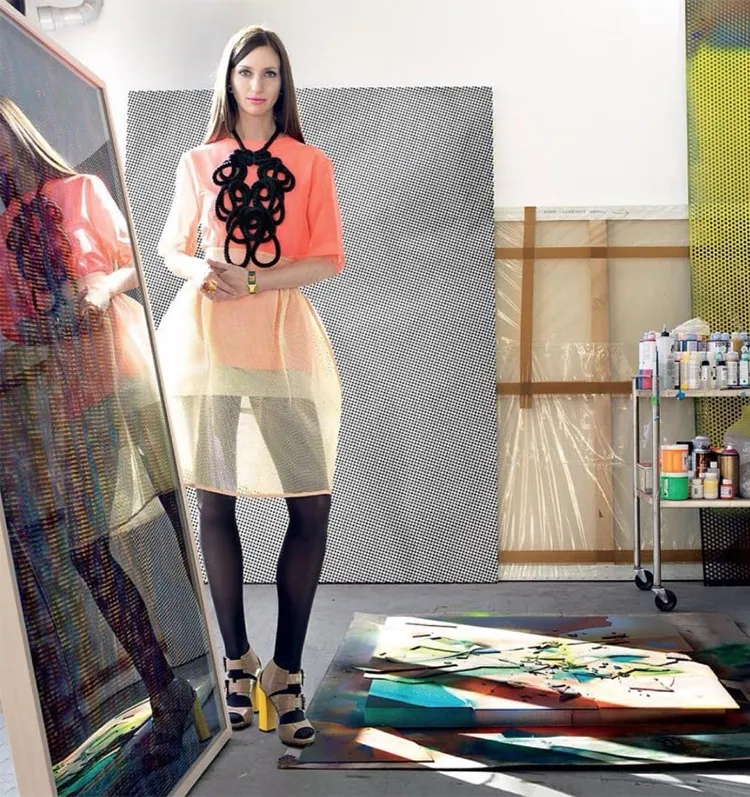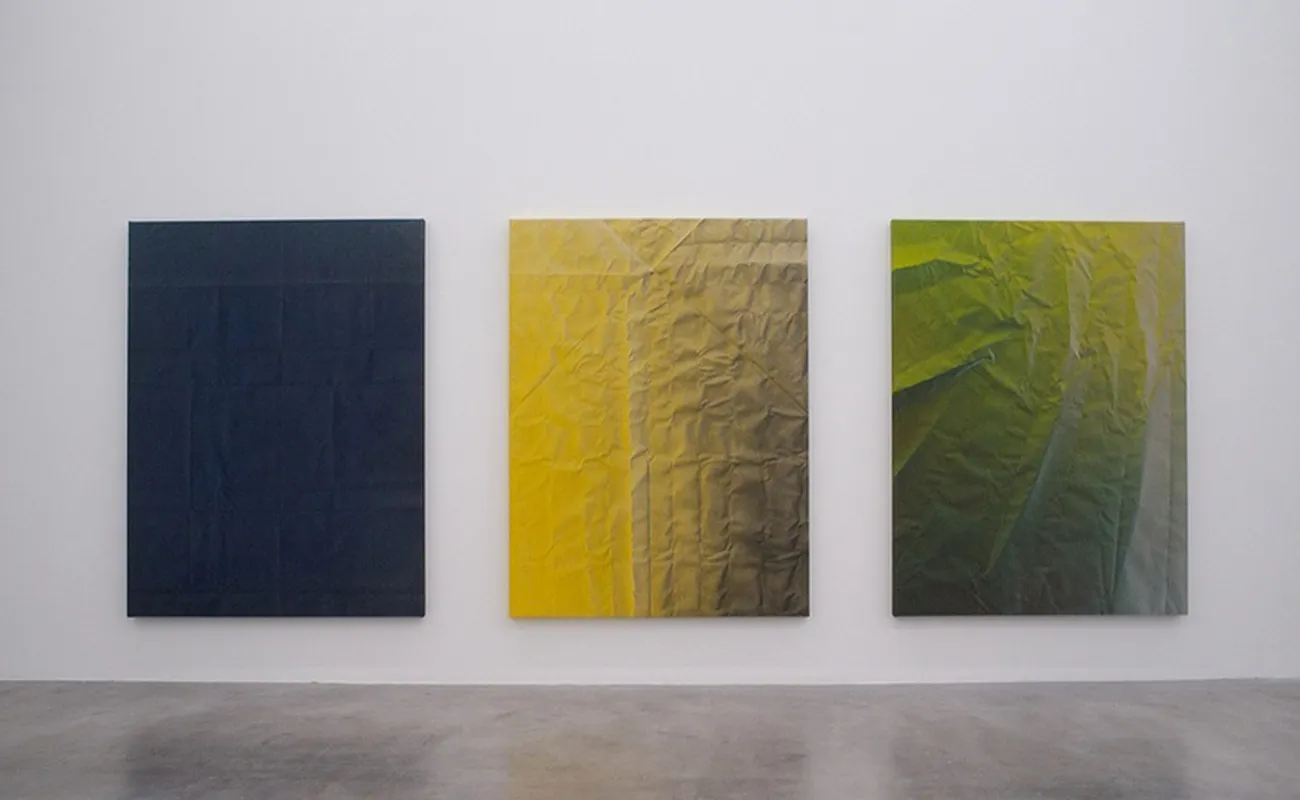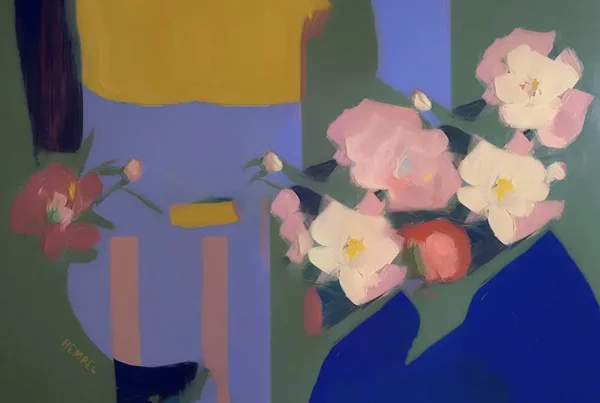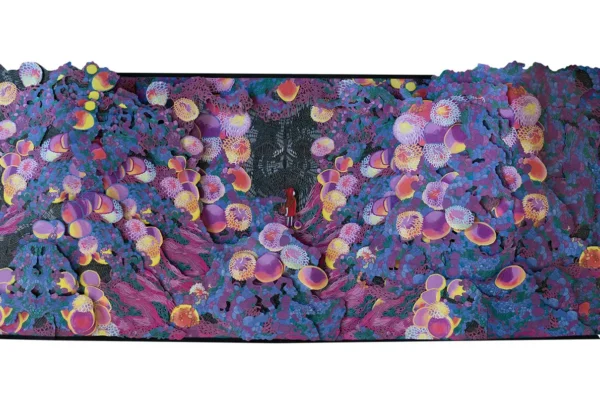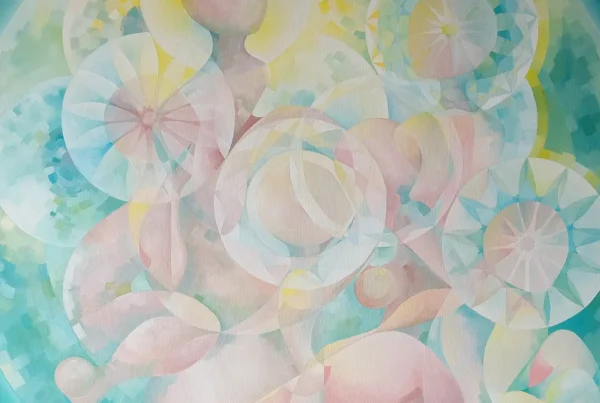The Roots of Her Visual Vocabulary
From the vibrant streets of San Francisco, Tauba Auerbach emerged, ingrained in a world colored by the artistic endeavors of her theater designer parents. This environment cultivated her early and profound connection with the arts, setting the stage for a journey into a vast and varied artistic landscape. The artist recalls how her apprenticeship as a sign painter was her gateway into the visual arts, marking her initial, hands-on exploration of typography and the visual intricacies of language. This experience wasn’t just a job; it was the foundation of Auerbach’s lifelong engagement with the alphabetic and the iconic, an exploration that continues to influence her multifaceted career.
The familial influence is unmistakable, as Auerbach’s upbringing in a home brimming with creative projects provided a fertile ground for her imaginative aspirations. It’s clear that her parents’ professions not only filled her environment with art but also with the principles of design and presentation, crucial elements that are evident in the precise and thoughtful way she approaches each piece. This blend of the technical with the aesthetic in her early years equipped Auerbach with a unique perspective, one that appreciates both the form and the function, the visual and the conceptual, in her later artistic explorations.
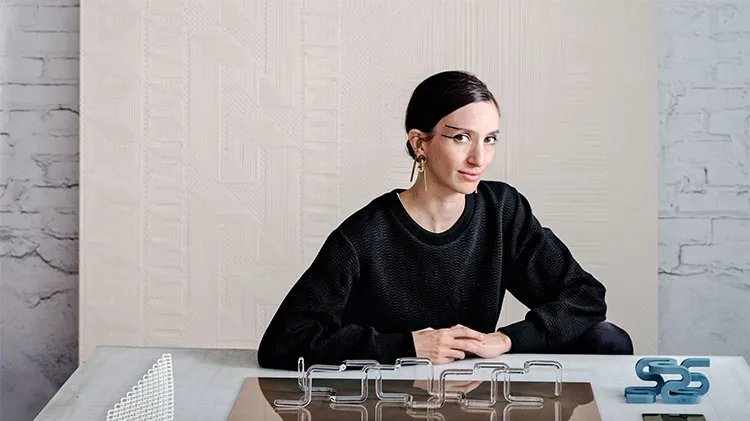
Tauba Auerbach: Confluences of Science and Art
Auerbach’s work is a testament to her fascination with the structures and systems that underlie the visible world. She articulates a deep interest in both macroscopic and microscopic scales, which she investigates through her art, blending physics, mathematics, and perceptual phenomena to probe the edges of human understanding and perception. This intellectual curiosity translates into works that challenge and expand the viewer’s perceptual boundaries, such as her renowned Fold paintings, which manipulate the canvas to create illusions of depth and dimension, effectively playing with the audience’s grasp of space and form.
Her artistic practice serves as a bridge between the seen and the unseen, the simple and the complex. Auerbach’s endeavors in crumpling and folding canvases or weaving intricate patterns are not mere artistic expressions but are experiments in visual perception itself. Each piece invites the viewer to engage more deeply, to see beyond the surface. This commitment to pushing the boundaries of visual and spatial perception reveals Auerbach’s core motivation: to make the invisible visible and the imperceptible tangible, challenging viewers to question and rethink their visual interactions.
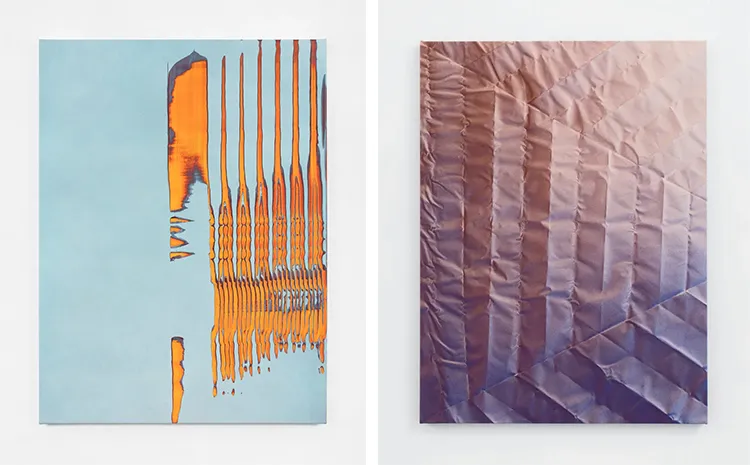
Exploring Dimensionality in Art
Delving deeper into Auerbach’s innovative spirit, the Fold paintings stand as a hallmark of her ability to blend two- and three-dimensional perspectives into a single canvas. Inspired by a desire to capture and convey the transitional states of materials, Tauba Auerbach began manipulating the physicality of canvas—folding it to create texture and shadow that suggest depth where there is none. This not only challenges the viewer’s perceptions but also blurs the line between the second and third dimensions. The painting process itself becomes a careful choreography of applying color to folded surfaces, then unfolding them to reveal a transformed perception of depth and volume on a flat plane.
This series exemplifies the artist’s commitment to challenging conventional viewing experiences. By prompting viewers to engage with a canvas that defies traditional flatness, Auerbach extends an invitation to explore the ambiguity of visual cues. The Fold paintings encourage a dynamic interaction; they require viewers to adjust their perspectives, to reconsider their understanding of depth, and to appreciate the interplay of shadow and light as creators of visual depth. Each piece is a testament to Auerbach’s mastery in transforming simple materials into complex visual statements about perception and reality.
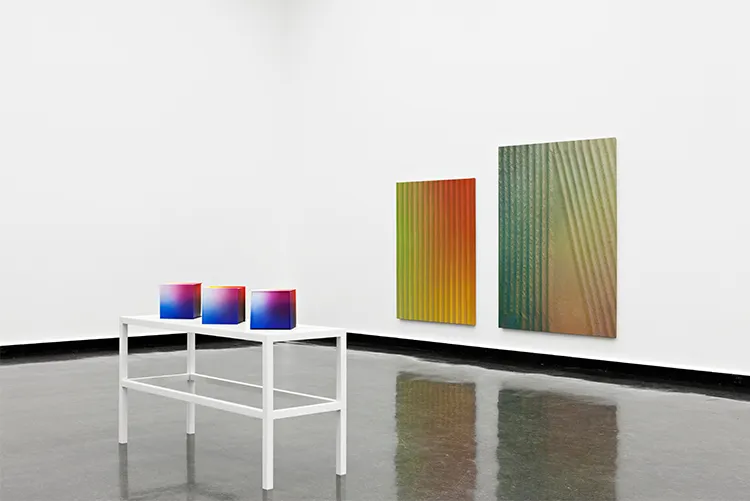
Tauba Auerbach: Weaving New Visual Realities
Transitioning from the concept of folding to interweaving, Tauba Auerbach’s exploration of topology and the mathematics of shapes is vividly expressed in her Weave paintings. This series further distorts the viewer’s perception by interlacing stretched canvas strips to create a fluctuating visual field of depth and texture. Auerbach plays with the principles of recession and projection, shadow and light, constructing artworks that appear to pulse and change as the viewer’s perspective shifts. These weavings are not just art; they are explorations of the boundaries between dimensions, challenging the flatness of the canvas with every intertwined strip.
Auerbach’s approach to weaving is as much about the process as it is about the outcome. By choosing to manipulate the canvas in such a physical way, she redefines the medium itself, transitioning the act of painting into a three-dimensional sculptural form. This innovative manipulation of materials and forms makes the Weave paintings compelling; they engage not only the eyes but also the mind. The viewers find themselves deciphering the visual language Auerbach has created, one that speaks to the possibilities of perception and the infinite ways in which art can be understood and experienced. Each work serves as a conversation piece about the fluidity of visual perception and the interaction between artist, artwork, and observer.
